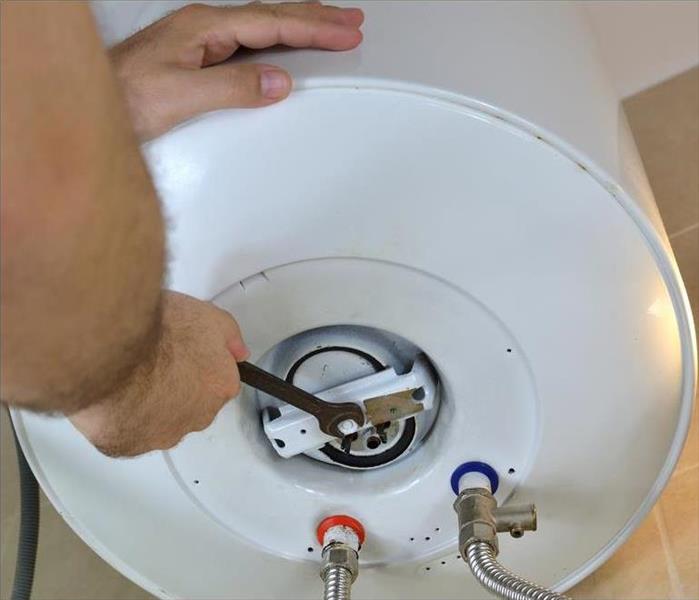8 Steps To Take When Flushing an Electric Water Heater
1/7/2022 (Permalink)
 Your home can benefit from the expertise of water damage restoration professionals, SERVPRO is always here, ready to respond to your needs, call us!
Your home can benefit from the expertise of water damage restoration professionals, SERVPRO is always here, ready to respond to your needs, call us!
When Flushing An Electric Water Heater, Follow These 8 Steps
Hidden away in the garage or a closet is one of your home’s appliances that many people consider an essential part of modern life. Though it is often ignored for years, rarely dusted or checked, it is used in most residences multiple times a day. It’s the water heater.
So, what do you do when this important appliance begins making thumping, popping, or creaking noises? Although it may have a long life in West Glenn Estates, AZ, most heaters need your help in removing the sediment that can become trapped in the bottom pan. Here is how to do a water heater flush.
1. Cut the Power
Make sure you turn off any electricity moving into the heating unit before taking any further steps. This will prevent damage to the heating elements.
2. Turn off the Water
Shut the valve feeding water into the tub of the unit. There is often an inlet at the top of the tank that can easily be closed.
3. Begin to Drain
Attach a hose to the drain valve at the bottom of the water heater. Be sure it is secure to prevent leaks.
4. Open the Spigot
Open the pressure relief control and the spigot. This will allow the tank to drain.
5. Remove the Water
Be patient while the water drains. It may take several hours to remove all the liquid.
6. Close the Valves
When the tank is empty, close the drain valve and disconnect the drain hose. Now close the pressure relief control valve.
7. Open Hot-water Faucets
Open every hot water faucet in your home, except the tank’s. Then turn on the inlet at the top of the tank and allow the water to flow freely out of the faucets for at least three full minutes.
8. Close All Faucets
When the tank is full of water once again, close the spigots. If you have low water pressure, let the water run for more than three minutes. Call a water specialty team if you have concerns.
Restore power and use your water heater as normal. By cleaning the sediment from the bottom, you may have added years to the unit’s life.



 24/7 Emergency Service
24/7 Emergency Service